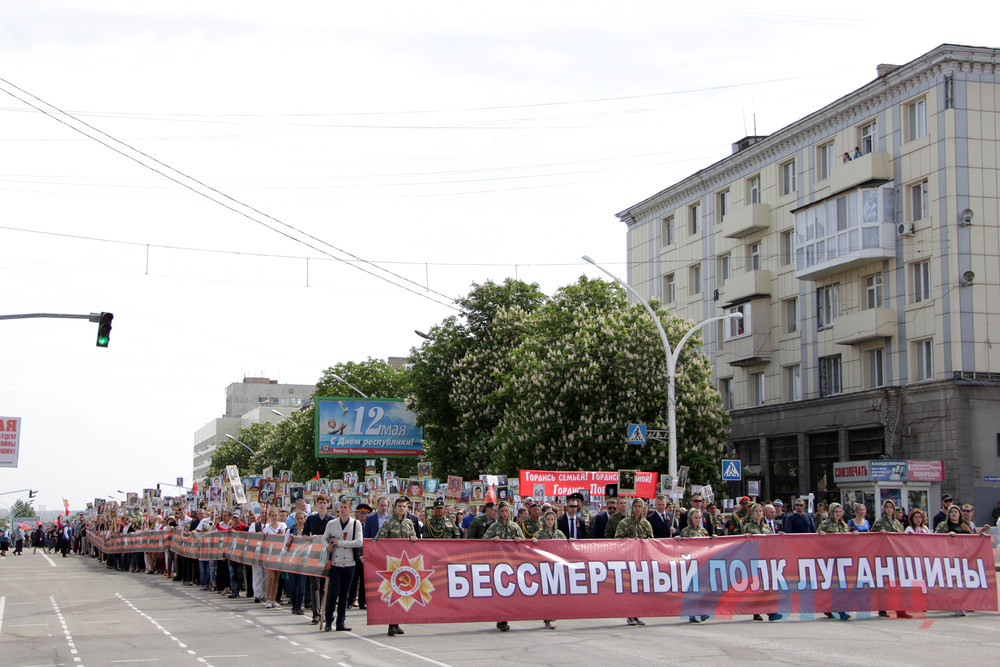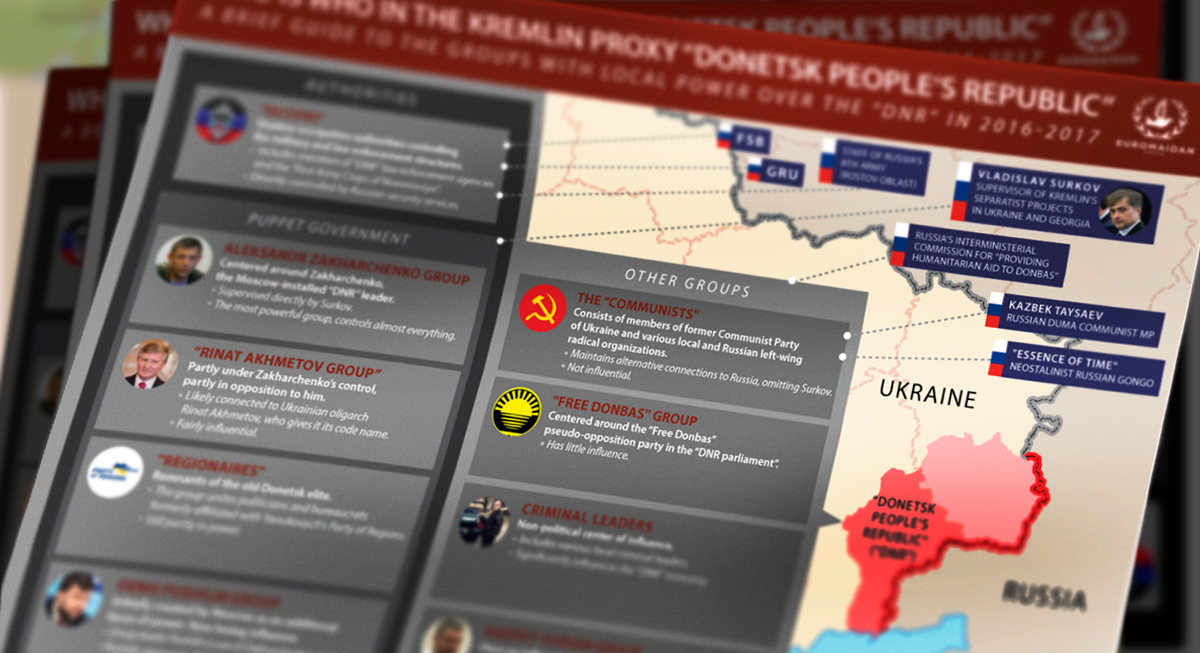Those conflicts never “froze” in a political sense—not even after the cessation of active hostilities in Moldova in 1992, in Georgia by fits and starts until 2008, and in Ukraine’s east with the 22 July 2020, enhanced ceasefire agreement. Instead of the immobility of a “freeze,” the cessation of hostilities has allowed steady movement toward political solutions favorable to Russia and its local protégés.
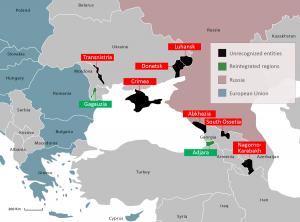
Freeze, moreover, implies a natural or spontaneous process; whereas the post-hostilities situation in Transnistria, Abkhazia, and South Ossetia—and now looming in Ukraine’s east—reflects painstaking diplomatic efforts to reduce these conflicts to a permanently dormant state.
Conflict conservation de facto on Russian terms became Western diplomacy’s fallback option instead of conflict resolution on Western terms, which seems unattainable or too costly. Conflict conservation, moreover, downgrades or sidelines these contentious issues on the West’s ambivalent agenda vis-à-vis Russia, as long as the West lacks an overall strategic agenda against Russia.
Transnistria became “the” pilot project for conflict conservation, in a tacit consensus between Russian and Western diplomacy, from 1992 to date; albeit with the supine acquiescence of Moldova as the object of aggression. Such acquiescence is one of the dissimilarities between this conflict and that in Ukraine’s east (and, earlier, in Georgia), along with the similarities. Ukrainian observers have been alert all along to the dangerous similarities with the Transnistria model of conflict conservation.
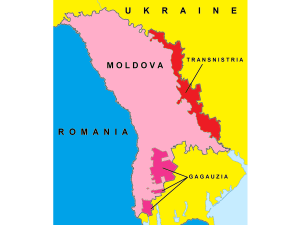
The Transnistria model helps to conserve three key sources of Moscow’s leverage: first, Russia’s military presence without a legal cover; second, a Russian-protected statelet, ideally but not necessarily under a constitutional cover squeezed out of the aggressed state (special status, federalization); and third, extensions of the Russian World inside the societies, cultures, and political systems of non-Russian countries.
These similarities are taking clearer shape following the 22 July enhanced ceasefire agreement and the Russo-German preconditions that have just been announced for holding another “Normandy Group” (Ukraine, Russia, Germany, France) summit. Ukraine obtained this latest ceasefire agreement at the price of quasi-recognizing and officializing Russia’s proxy forces in Donetsk and Luhansk while exonerating Russia of involvement in the conflict (see EDM, July 29, 30, August 5, 6). The Russo-German demands call for “full” compliance with “all” of the December 2019 Paris summit’s prescriptions to implement the Minsk “agreements” (Ukrinform, August 11).
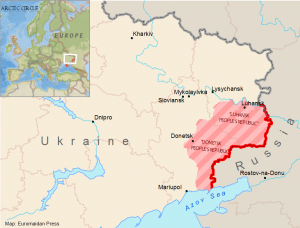 Those Normandy prescriptions closely fit the logic of conflict conservation, namely:
Those Normandy prescriptions closely fit the logic of conflict conservation, namely:
- a complete and comprehensive ceasefire between Ukrainian and Donetsk/Luhansk-flagged forces (just achieved on Russian terms—see above);
- step-by-step disengagement of troops along the demarcation line within Ukraine (instead of Russian withdrawal from Ukraine);
- opening checkpoints for movement across the demarcation line (de facto accepting the loss of Ukrainian control beyond the demarcation line);
- a Ukrainian „special status“ for the Russian-controlled territory, to be worked out between “the sides” (implying Kyiv and Donetsk-Luhansk, not Russia) in the Minsk Contact Group (see EDM, December 11, 12, 2019).
The overall process involves:
1) A full, comprehensive ceasefire between legitimate state forces and Russia’s local proxies. Russia is exempted from its responsibility as a conflict-initiator and belligerent, even as its own forces guarantee the territory’s seizure from the legitimate state. Legitimate forces and Russia’s proxies on either side of the demarcation line become coequal parties to the ceasefire arrangements, including verification and incident-response mechanisms. Russia has accomplished this stage in Moldova/Transnistria within a few short years after the 1992 ceasefire. July 22, 2020, enhanced ceasefire agreement in Ukraine’s east opens this stage in that conflict.
2) Disengagement of forces at agreed distances from the demarcation line, whether in one fell swoop as in Transnistria’s case or piecemeal as proposed for Ukraine’s Donbas, where local disengagement zones would ultimately cover the full length of the demarcation line. A buffer zone takes shape under some uncertain policing rules. The pullback (“otvod”) from the demarcation line within the country becomes a long-term arrangement, instead of the declared goal of withdrawal (“vyvod”) of Russian forces from the country. Local and external actors shift their priorities from conflict resolution under international law toward stabilizing a new status quo. Russia unilaterally imposed these “new realities” on Moldova in 1992 and thereafter; Western diplomacy then took this accomplished fact on board. Russia now pursues a similar dispensation for Ukraine’s Donbas through the Normandy process (see above).
3) A “joint peacekeeping mechanism” involving the local legitimate state, Russia’s local proxies, and Russia itself, under Russia’s overall supervision, is Russia’s original contribution to the theory and practice of peacekeeping. It is a Russian discretionary arrangement outside any international framework. Moscow successfully introduced such “peacekeeping” in Moldova and Georgia in the early 1990s with passive Western acceptance. Russia dispensed with it after seizing Abkhazia and South Ossetia from Georgia in 2008, but it still needs such “peacekeeping” in the case of Moldova/Transnistria. Moscow failed to impose this system on Ukraine in Donbas. Only an embryo of this system emerged there with the Joint Center for Control and Coordination (JCCC), a ceasefire-monitoring body comprised of Russia and Ukraine, with a token presence of Donetsk-Luhansk, from 2014 to 2017. At present, Ukraine is coming under pressure to revive the JCCC as a bilateral structure of Kyiv and Donetsk-Luhansk, so as to further legitimize Russia’s proxy forces (see EDM, July 29, 30). In this conflict theater, however, the Organization for Security and Cooperation in Europe’s (OSCE) Special Monitoring Mission (a ceasefire-monitoring, not a peacekeeping mission) has somewhat helped restrain Russia’s freedom of action.
4) Relegating the conflict from the inter-state to the local (internal) level is the basis for the “freeze” in Transnistria on Russian-imposed terms. These define Chisinau and Tiraspol as parties to the conflict, the ceasefire arrangements, and an eventual political settlement that they should negotiate directly, with Russia as an arbiter. Moldova accepted these basic terms early on, amid Western indifference followed by Western consent. In Ukraine’s case, Russia aims to infiltrate the Transnistria model into the Minsk Contact Group, where Donetsk and Luhansk hold the status of “participants.” Russia seeks to position itself alongside the Organization for Security and Cooperation in Europe (OSCE) as a mediator to direct negotiations between Kyiv and Donetsk-Luhansk. In this it failed for five years until the Volodymyr Zelenskyy administration gave Russia three openings: a) acceptance of the Steinmeier Formula for incorporation into Ukraine’s legislation through direct negotiations between Kyiv and Donetsk-Luhansk (ongoing in the Minsk Contact Group); b) the “consultative council” of Kyiv and Donetsk-Luhansk, with Moscow positioned between them (project halted by a Ukrainian public backlash); and c), with far-reaching potential consequences, the July 22 ceasefire agreement, equalizing Ukraine’s armed forces with those of Donetsk-Luhansk as contracting parties to the ceasefire and, by extension, to the conflict as such, while exonerating Russia, along the lines of the Transnistria model (see EDM, July 29, 30, August 5, 6).
5) “Special Status” as an instrument for state fracture. Russia coerced Moldova in the early 1990s and Ukraine in 2014–2015 (Minsk “agreements”) into consenting to endow Transnistria and “certain areas of the Donetsk and Luhansk regions” (ORDLO), respectively, with a special constitutional status. (The “special status” occasionally morphed into “federalization” in 2003 in Moldova and in 2014 in Ukraine, but those were episodes.) In this respect also, Russia follows its own Transnistria model in ORDLO. In both cases, the putative Special Status would a) crown direct negotiations on an equal footing between the national government and the Russian-installed leadership of Transnistria or ORDLO; b) not be granted (handed down) from the center, but contracted between equal parties (thus not revocable by the central government), and constitutionally enshrined on a permanent basis; c) endow the Russian-installed leaderships in those territories with quasi-sovereign powers; d) preserve the fiction of Moldovan or Ukrainian territorial integrity and sovereignty while creating de facto Russian-controlled states-within-states; e) reinsert these into Moldova’s or Ukraine’s political systems with a view to upending them; f) stimulate centrifugal tendencies in certain other Moldovan or Ukrainian territories, resulting in demands for special treatment and ultimate fragmentation.
6) Internal constitutional transformation as a substitute for inter-state peace. Russia’s state-on-state conflict undertaking would not end with an inter-state peace settlement (which would confirm that Russia was a belligerent), but would instead result in an internal pseudo-constitutional settlement forced upon the aggressed state. Moscow’s pursuit of the special-status projects against Moldova and Ukraine over the course of almost three decades is a tribute to Russia’s sense of strategic purpose. The European Union and the United States pay diplomatic lip service to the “special status” for Transnistria; while Germany and France profess allegiance to the Minsk “agreements,” the political centerpiece of which is a quasi-sovereign “special status” for ORDLO.
7) The Russian World. In both Transnistria and ORDLO, Russia is successfully experimenting with enlarging the Russian World beyond the Russian Federation’s current official borders. Russia and the Transnistrian authorities set a pattern for this experiment in the early 1990s, followed since 2014 in ORDLO’s version, reflecting local circumstances but also the evolution of Russia’s own state ideology during that period. While local circumstances are distinct from case to case, the commonalities are unmistakable in Moscow’s handling of Transnistria and ORDLO: building on the foundations of Soviet identity to develop the Greater-Russia identity, mass-scale Russian passportization, as well as intensified linguistic and cultural Russification of non-Russians (who form the majority of the population in both Transnistria and ORDLO by the criteria of ethnicity).
8) The rule-of-law dilemma. Any special status, federalism, autonomy, or constitutional settlement, however, defined, would not operate as written in the absence of rule of law in Ukraine or Moldova. Both countries experience grave deficits in terms of rule of law and are unlikely to overcome this situation any time soon. Any special-status agreements would, in practice, operate as informal, non-transparent deals between power groups and interest networks in Chisinau and Tiraspol, Kyiv and ORDLO, and probably also other territorial power brokers in Ukraine or Moldova. Introducing special-status arrangements in Ukraine and Moldova would fatally reverse any progress in terms of rule of law in either country.
Read more:
- Gagauzia – object lesson for Ukraine on how a ‘reintegrated’ region gives Moscow leverage
- Shady agreements legitimizing Russia’s puppet “republics” likely signed in Minsk
- Traps of the Transnistrian conflict
- Troop disengagements with Russia work only after capitulation to Russia: lessons from Georgia and Moldova
- Ukrainian President Zelenskyy appoints gerontocrats to negotiate with Russia in Minsk
- Kozak-Yermak plan on Donbas: The fine print
- Policy shift shows Russia preparing to recognize its puppet republics in Donbas
- Transnistria. Why Russia should leave the occupied territories
- European Court of Human Rights ruled Russia responsible for actions of Transnistria
- Transnistria frozen conflict zone recognizes Russian tricolor as second “national” flag
- Why Ukraine must avoid the Transnistrian scenario

